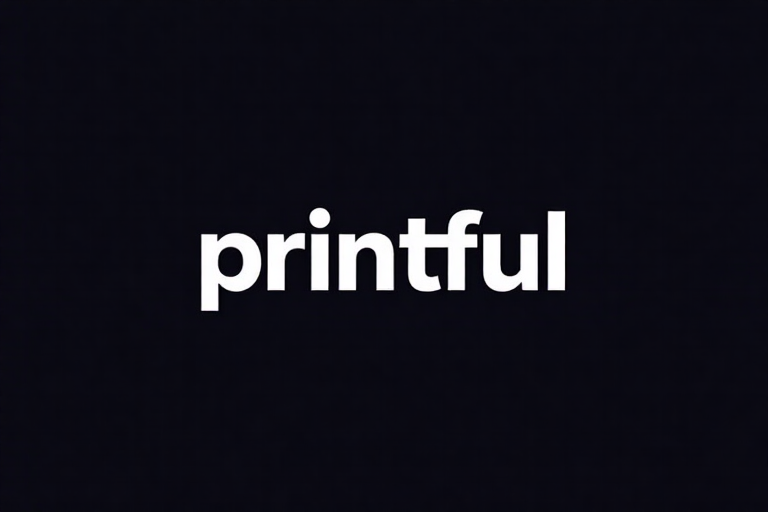Printful is more than just a print-on‑demand service—it’s a powerful way to launch a low‑risk, scalable ecommerce business. In this guide, we’ll walk you through actionable steps to integrate Printful into your existing online store, share secret strategies that most sellers overlook, and explore niche ideas and advanced AI tools that can give your business the extra edge.
1. Why Printful is a Game‑Changer for Ecommerce
Zero Inventory, Maximum Flexibility
Printful handles everything from printing to shipping, allowing you to focus on designing and marketing your products without the headache of inventory management.
Seamless Platform Integration
Whether you’re using Shopify, WooCommerce, BigCommerce, or another ecommerce platform, Printful’s integration is straightforward. This means you can quickly add a wide range of custom products—from t-shirts to home decor—without needing technical expertise.
Interactive Question:
What products are you most excited to create with Printful? Let us know in the comments!
2. Setting Up Your Printful-Powered Store
Choosing Your Platform
- Shopify & WooCommerce: Both offer user-friendly integrations with Printful.
- BigCommerce & Etsy: These platforms also integrate seamlessly, giving you access to diverse audiences.
Step‑by‑Step Integration
- Connect Your Store: Use Printful’s integration tools to sync products and orders.
- Design & Upload: Create high‑quality designs (more on that below) and upload them via Printful’s dashboard.
- Customize Your Product Listings: Optimize titles, descriptions, and tags using relevant keywords to improve your search visibility.
3. Design and Product Strategies That Convert
Create Designs That Stand Out
- High‑Quality Graphics: Use software like Adobe Illustrator or Canva to create crisp, appealing designs.
- AI‑Powered Tools: Experiment with AI tools like DALL‑E or Midjourney to generate unique design ideas quickly. ChatGPT can also help brainstorm creative slogans or product copy.
Secret Strategy: Hybrid Niche Designs
Combine two trending themes—say, “eco‑friendly lifestyle” with “minimalist art”—to capture a dedicated, underserved audience. This unexpected combination can set you apart in a crowded market.
Best Niches to Explore
- Eco‑friendly & Sustainable: Designs promoting green living are increasingly popular.
- Fitness & Wellness: Think motivational quotes, gym wear, and yoga apparel.
- Pet Lovers: From custom pet portraits to humorous pet quotes, this niche never goes out of style.
- Pop Culture & Gaming: Capitalize on trends in movies, TV shows, and gaming with designs that resonate with dedicated fan bases.
- Seasonal & Event‑Driven: Holiday themes, limited‑edition releases, or local events can generate buzz and urgency.
Interactive Element:
Consider creating a poll asking readers which niche they’d like to see more designs in.
4. Marketing Your Printful Products
Optimize for SEO and Conversions
- Metadata & Keywords: Use targeted keywords in your product titles, descriptions, and tags. Research tools like Google Keyword Planner and KeywordTool.io can help you find the right terms.
- Compelling Imagery: Use Printful’s mockup generator to showcase products in realistic settings. High‑quality images can boost your conversion rates.
Leverage Social Media and Influencers
- Social Media Campaigns: Share behind‑the‑scenes content, run contests, or use Instagram Stories to drive traffic.
- Influencer Collaborations: Partner with niche influencers to promote your products and expand your reach.
Email Marketing & Retargeting
- Build a Subscriber List: Offer discounts or exclusive content in exchange for email signups.
- Retargeting Ads: Use Facebook or Google retargeting to remind visitors of products they viewed but didn’t purchase.
5. Advanced Tips and Secret Strategies
Utilize AI for Continuous Improvement
- Market Research: Use AI-powered analytics tools to monitor trends and customer behavior.
- A/B Testing: Regularly test different product descriptions, images, and call‑to‑action phrases. Tools like Optimizely can streamline this process.
- Content Generation: Let AI help generate fresh blog posts, social media content, or even personalized emails that speak directly to your audience’s interests.
Monitor, Analyze, and Adapt
- Analytics Tools: Integrate Google Analytics and Printful’s dashboard data to track performance. Look for trends in best-selling products and adjust your strategy accordingly.
- Customer Feedback: Engage with your customers via surveys and reviews. Their insights can lead to new design ideas or niche opportunities.
6. Final Thoughts
Integrating Printful into your ecommerce strategy isn’t just about adding another product line—it’s about leveraging a robust, flexible system to unlock new revenue streams without huge upfront investments. By focusing on quality design, smart SEO, and innovative marketing strategies, you can stand out in the competitive world of print‑on‑demand.
Remember, success is an ongoing journey. Experiment with AI tools, keep an eye on emerging niches, and never stop refining your strategy. Your next big sale might be just around the corner!
